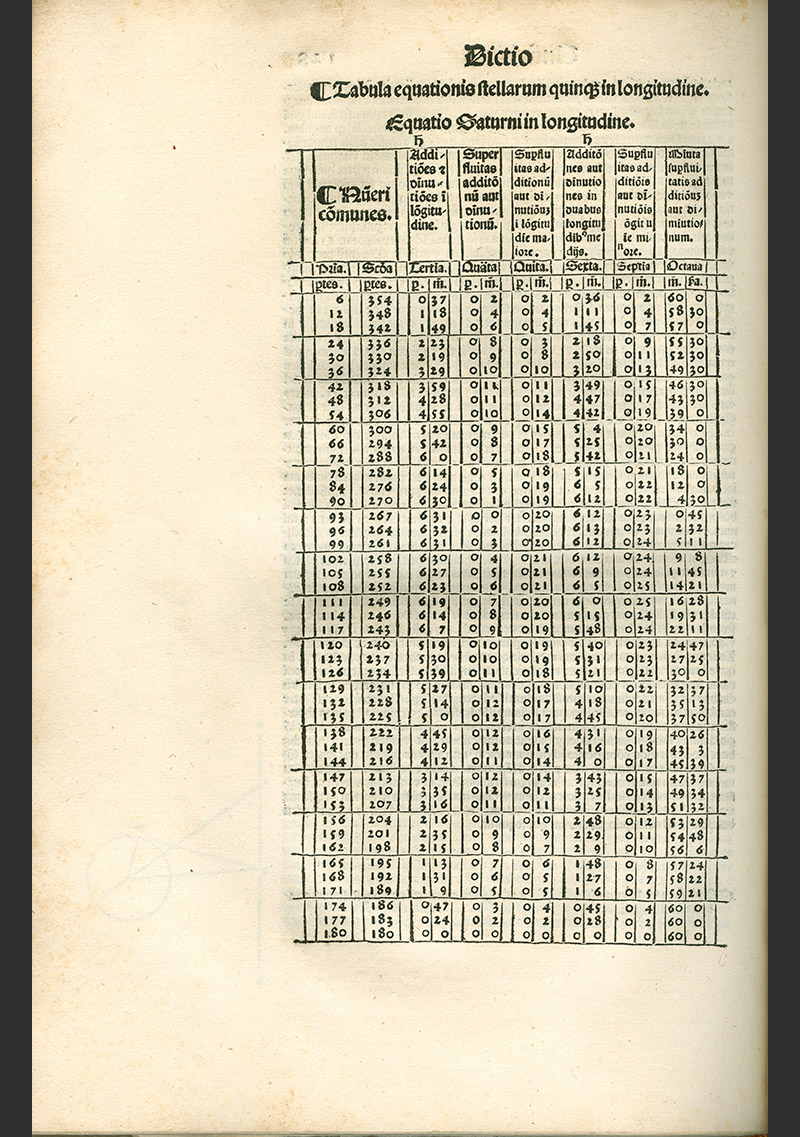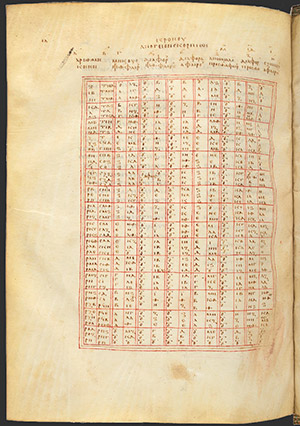Ptolemy’s Astronomical Tables

- Gerard of Cremona, translation of Ptolemy’s Almagest.
- Ptolemy, Almagest XI.11: astronomical tables.
- Almagestum Cl.Ptolemei Preludiensis Alexandrini Astronomorum Principis. Opus Ingens ac Nobile Omnes Celorum Motus Continens (Tr: Gerardus Cremonensis).
- Venice: Peter Liechtenstein, 1515; fol. 128v.

- Ptolemy, Almagest XI.11: astronomical tables.
- Par. gr. 2389 (IX cent.), f. 309v; Paris, Bibliothèque nationale de France (BNF).
The geometrical models developed by Ptolemy and other Greek astronomers answered the theoretical question of how the sun, moon, and planets moved around the Earth. But for most practicing astronomers and astrologers, this question was of less importance than being able to compute the position of a planet for a given moment of time. In principle, this could be done directly from these models, but the calculations are long and difficult and require a detailed mathematical understanding of the models. In practice, therefore, people wanting to compute the positions of the planets did not go to geometrical models themselves but instead used astronomical tables which distilled those models into numerical data which could be used relatively easily to compute these positions.
This image shows one such table taken from the Almagest: a table giving information on the anomaly (changing speed) of Saturn. By using this and a few other tables, the user could compute Saturn’s position for any given date without having to understand the complexities of Ptolemy’s equant model which underlies the calculation. Instead, the computation required only that the user look up several values from the tables and apply some simple arithmetic (addition, subtraction, and, occasionally, linear interpolation) to compute the position.
Ptolemy included tables for computing the positions of the sun, moon, and planets, as well as lunar and solar eclipses and lunar and planetary visibilities in his Almagest alongside his discussion of the geometrical models. He subsequently produced a stand-alone set of tables known as the Handy Tables, which provided the material needed to compute positions and phenomena without all of the accompanying discussion of the models. The Handy Tables proved very popular: a large number of fragments of them are preserved in papyri and they can be shown to have been used to compute the planetary positions in many Greek horoscopes.
Ptolemy’s tables provided the basic model for astronomical tables known from the Islamic world (zījes) and medieval and early modern Europe.
Select Bibliography
- Neugebauer, Otto. 1975. A History of Ancient Mathematical Astronomy. Studies in the History of Mathematics and Physical Sciences. 1. New York: Springer-Verlag: 183–190.
- Toomer, Gerald J. 1984. Ptolemy’s Almagest. New York: Springer-Verlag.

